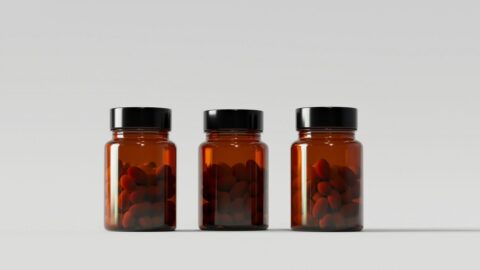I only really want two things this holiday season. The first is good, old-fashioned eggnog.
The other is the knowledge that Cost Curve is making it to people who would appreciate it. So if you can think of someone who might benefit from subscribing, you can click here and a fully-formed email will pop up, suitable for sending would-be readers.
If that’s too hard a sales pitch, know that https://costcurve.beehiiv.com/subscribe is the link to subscribe.
The Biden administration is prepared to wield march-in right as a weapon against high drug prices, per coverage in Politico that was quickly matched by STAT. The details are not yet available, but the reporting says they’ll be released today. Probably the moment after I send this newsletter.
The underlying theory of march-in right is that the 1980 Bayh-Dole Act, which gives the government the ability to forcibly license patents under specific circumstances, can be applied to cases where drug prices are so high that they impact access.
I say “theory” because there have been nine attempts to use march-in rights to break patents, and none has ever succeeded.
There are a couple of reasons why march-in has never taken off. The first is that Bayh and Dole themselves explicitly rejected the use of the law as a way of addressing drug prices. And the second is that the negative impact of destroying the willingness of drugmakers to build on NIH discoveries would far outweigh any cost savings. (The release on the 1995 change in NIH policy around “reasonable pricing” clauses explains the issue well.)
But now we’re in a new era. There are two ways to think about this.
The first, from a philosophical POV, is that this is a really big friggin’ deal. The entire biopharma innovation ecosystem is built, quite literally, on the foundation of clear intellectual property rights. The moment that system is seen as conditional, the whole system begins a slow-motion collapse.
By the standard, the move toward march-in is chilling.
The second way of thinking about this is to game out the execution of such a policy. It’s almost certainly going to be legally challenged, and the fact that the guys who drafted the bill think this is a perversion of the legislative intent is probably going to come up. I’m not going to predict this is a legal loser — I’d be way out of my lane — but the administration’s position sure doesn’t seem like a slam dunk.
It also seems hard to imagine a way for the policy, even if it survives legal review, to be widely applied. I talked last week about this Vital Transformation report that suggested that very few drug patents are explicitly built on government work. That means that HHS would have very few targets to start with. The potential impact on costs is narrow.
But the potential impact on innovation is much greater. Some amazing technologies — CAR-T comes to mind — nearly ended up abandoned because the commercial prospects were considered so dim that contracting with the NIH wasn’t worth it. Raise the bar on that contracting, and we’ll see even less of it.
My cynical take here is that this is a fantastic piece of politics. It shows that the administration is doing something — anything — to address drug prices, and whether or not it is wise or workable is beside the point. It suggests a bias toward action, and it will get the pharmaceutical industry (appropriately) riled up, which probably only boosts the optics.
All that probably plays great with the electorate. Never mind that it won’t solve the underlying problem.
This SmithRx blog post on the new Cigna “cost-plus” health plan option is well worth the read, because it brings numbers to the discussion. Word around the water-cooler is that Cigna will provide health plans medicines at cost, plus 15%. And they’ll pay pharmacies cost plus 5%. SmithRx asks the obvious question: where does the other 10% go?
The FTC told a bunch of pharmaceutical companies to clean up their Orange Book patents (mostly on delivery devices) by Dec. 16. But — per STAT — only one company has taken action. It’s not clear from the story if this is just procrastination or if companies are spoiling for a legal fight. I guess we’ll know in a week or so.
Here’s a useful resource from Pharmaceutical Strategies Group on 2024 formulary exclusions from the “Big Three” PBMs. It helpfully notes not only the exclusions, but what percentage of patients might be affected.
Bernie Sanders said that he’s going to hold a hearing on diabetes next week, but STAT has zero details beyond that. There’s so much interesting happening in the diabetes space beyond insulin … I hope that we’ll get something novel.
Launch pricing watch: Novartis said it will bring Fabhalta, its oral therapy for paroxysmal nocturnal hemoglobinuria, to market for about $550,000. That’s a tick higher than ICER estimated in its recently released draft report on the medicine, which suggested that the treatment would probably be cost-effective (largely because its competitors are already priced similarly).
If this email was forwarded to you, and you’d like to become a reader, click here to see back issues of Cost Curve and subscribe to the newsletter.





